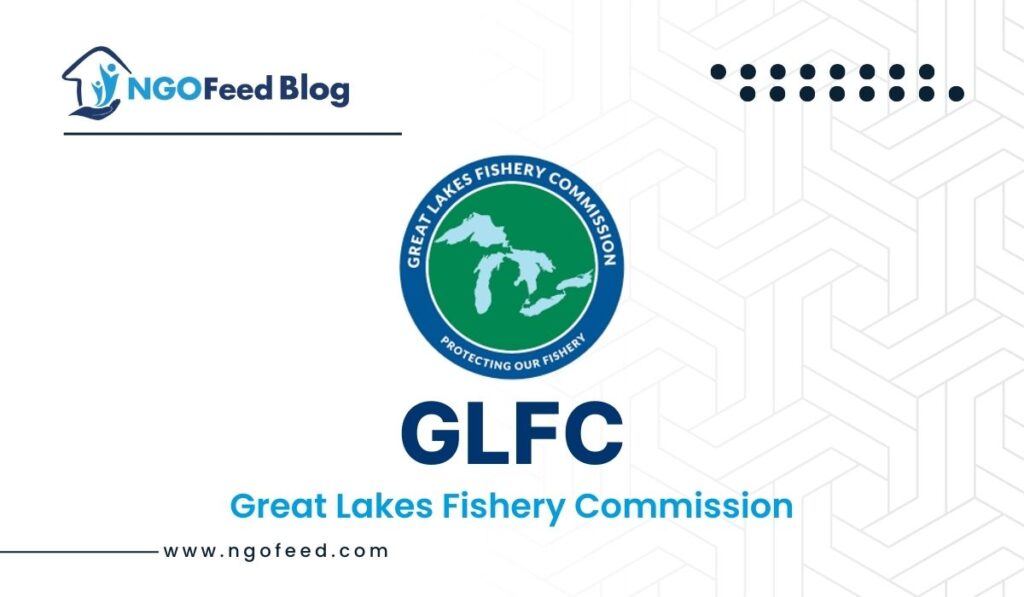GLFC Full Form: The Great Lakes Fishery Commission (GLFC), established in 1955, safeguards valuable fisheries in the Great Lakes. This bi-national Canada-US body coordinates research, controls invasive sea lamprey, and advises on fishery management. GLFC offers science-based advice for 11-20 fish stocks, ensuring the health of this crucial resource.
Table of Contents
History of GLFC
The Great Lakes Fishery Commission (GLFC) is a unique binational organization established by Canada and the US in 1955.
This treaty-bound commission tackles fishery management across borders for the eight US states, one Canadian province, and tribal authorities.
The need for collaboration arose due to fish ignoring political boundaries and the devastating impact of invasive sea lamprey.
Previous attempts at collaboration failed, but the shared threat of the sea lamprey forced a successful partnership.
Formed in 1954, the GLFC combats the sea lamprey, promotes fishery science, and facilitates cooperation for a healthy Great Lakes fishery.
Members of GLFC
Members: Canada, United States of America
Structure of GLFC
Canadian Commissioners: the 4 Commissioners are appointed for 2-year terms by the Privy Council. Some Commissioners serve two-year terms, others serve at pleasure.
U.S. Commissioners: the 4 Commissioners (plus one alternate) are appointed by the President for 6-year terms. Per the US Great Lakes Fishery Act of 1956 (as amended), one Commissioner must be a federal official, one must be a state official, and no two can be from the same state. U.S. Commissioners serve six-year, staggered terms. The federal and alternate Commissioners serve at the President’s pleasure.
Secretariat: the day-to-day operational authority and personnel management rests with the Executive Secretary (as identified in Article III of the Convention). The secretariat is organized around five major program areas: sea lamprey control, science, fishery management, communications, and administration. Currently, the secretariat employs approximately twenty staff. Contractual staff are retained on an as-needed basis. The single secretariat is located in Ann Arbor, Michigan.
Impact Areas
- Sustainable Aquaculture: Aquaculture is the world’s fastest-growing food sector, with huge potential for expansion. It plays a critical role in global food production and over half the aquatic foods for human consumption are farmed. FAO’s work in aquaculture stems from Blue Transformation, a vision committed to building sustainability and resilience, minimizing environmental impacts, improving biosecurity and disease control with the support of technology and innovation, and developing capacities to ensure equitable outcomes that further develop the human, social, cultural and economic dimensions of aquaculture.
- Sustainable Fisheries: Effective management of all fisheries is a core objective of Blue Transformation. Improving fisheries management is essential for rebuilding fishery stocks, restoring ecosystems to a healthy and productive state, and increasing catches sustainably. FAO’s work on sustainable fisheries promotes the adoption of an ecosystem approach that takes account of the environmental, social and economic objectives to achieve sustainable and resilient aquatic food systems.
- Sustainable Value Chains: Global fisheries and aquaculture production has steadily expanded in recent years, making aquatic foods one of the most widely traded products in the world. But increases in production and trade do not mean equitable distribution, growth or sharing of benefits. To achieve that, we need a transformative action. Transforming the way aquatic foods are harvested, processed, marketed, traded and consumed is key to long-term economic, environmental and social sustainability. This is what FAO calls a Blue Transformation, a vision where resilient, equitable and transparent value chains lead to more opportunities for all. This page presents our projects, products and services.

